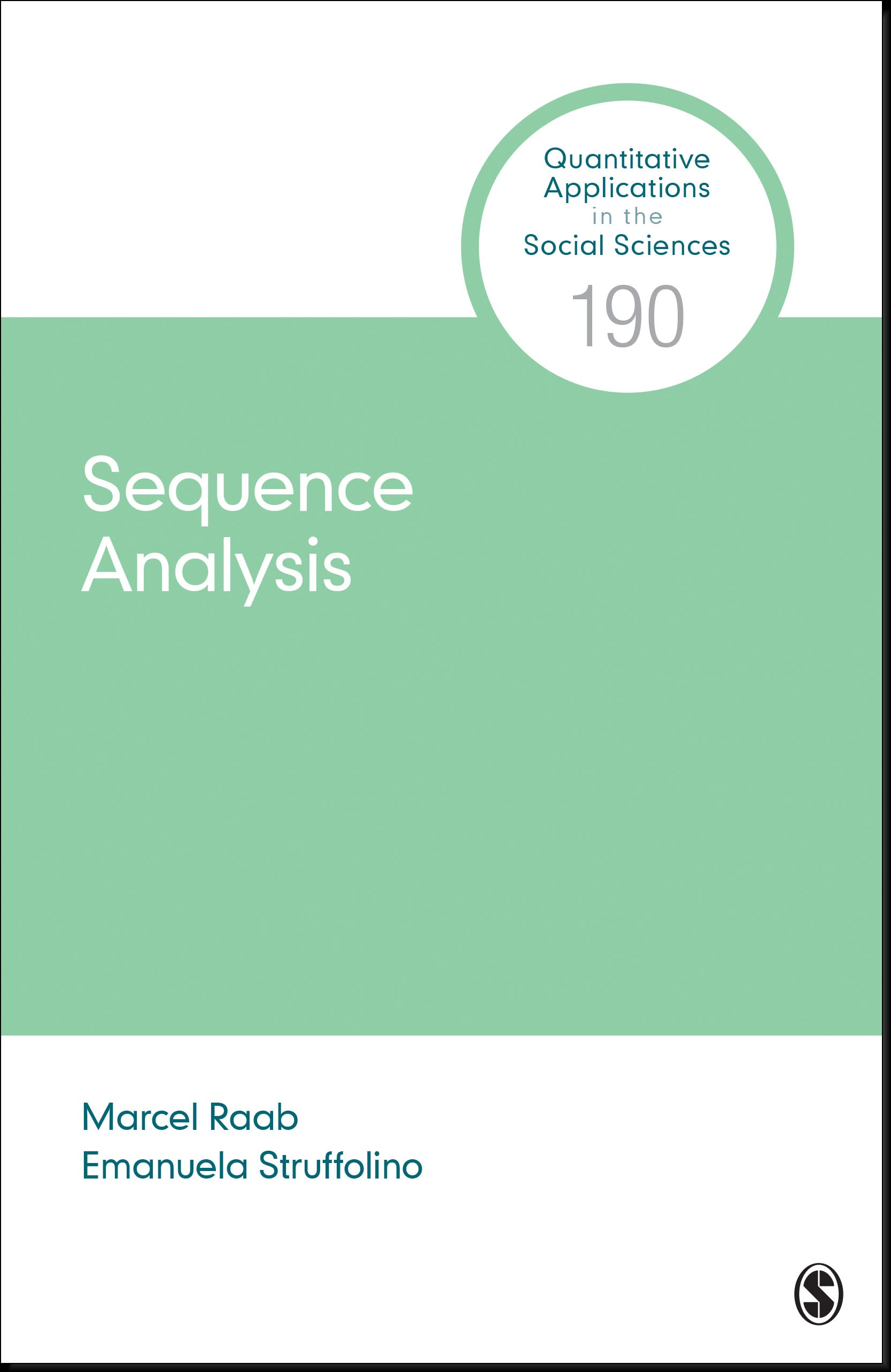This site is intended to enhance your use of the book Sequence Analysis by Marcel Raab & Emanuela Struffolino. On this webpage we provide accompanying material illustrating how to conduct sequence analysis in using {TraMineR} (Gabadinho et al., 2011), {TraMineRExtras} (Ritschard et al., 2021), and {WeightedCluster} (Studer, 2013). We also show how to create plots with the {ggseqplot} (Raab, 2022) package which was developed after the book release. Likewise, we briefly showcase how to use the newly developed Python package sequenzo to compute dissimilarities from within R.
If you want to download the data and code required for reproducing the results, you can access the chapter-specific zip files on this overview page. In addition to these zip files, the chapter-specific sub-pages provide instructions and some bonus material introducing additional examples and analytical tools.
Please note that most of the materials on this site are designed to be used in tandem with the book published by SAGE ( order from SAGE, Amazon, Barnes & Noble, or your local bookstore). The book is also available on SAGE Research Methods
📋 Errata & Corrections
We welcome feedback on any errors or improvements. Please use our issue tracker to report problems.
Known issues
p. 40: “four out of four possible transitions…” should read “three out of three”
p. 41: The second panel title in Table 2.9 should be “Sequence y = (S,LAT,COH,S); ϕ(y)=15$”
p. 69: The title of Table 3.13 should be “Matrix of property-based substitution costs for family formation trajectories”.
p. 94: The title of Table 4.2 should be “A guide for an approximate interpretation of the average silhouette width’s values”
p. 108: The word “perspective” in “retrospective and perspective data” should be “prospective”.
p. 123: “Panel a” in the last paragraph should be “Panel b”.
p. 124: The sentence starting with “For the joint matrix” should read “For the joint matrix, the R2 and the ASW indicate a three cluster solutions as optimal, but with very small differences across solutions. As expected, the ASW value for this matrix is lower than those in Panels a and b due to the higher complexity of the data. This means that if we strictly follow the recommendation of the ASW (and the R2) and opt for a three-cluster solution, we might overlook some types in both the labor market and the family formation channels that would allow us to maximize the separation between the groups and the within-cluster homogeneity.”
p. 131: The in-line formula \(SS_W\) and \(SS_T\) are switched. The correct version is: \(SS_B=SS_T-SS_W\)
Citation
For attribution, please cite this work as:
Raab, M. & Struffolino, E. (2022). Sequence Analysis. Thousand Oaks, CA: Sage.
BibTeX citation
@book{raabstruffolino2022,
author = {Raab, Marcel and Struffolino, Emanuela},
year = {2022},
title = {Sequence Analysis},
series = {Quantitative Applications in the Social Sciences},
number = {190},
publisher = {SAGE},
address = {Thousand Oaks, CA},
isbn = {9781071801888}
}
